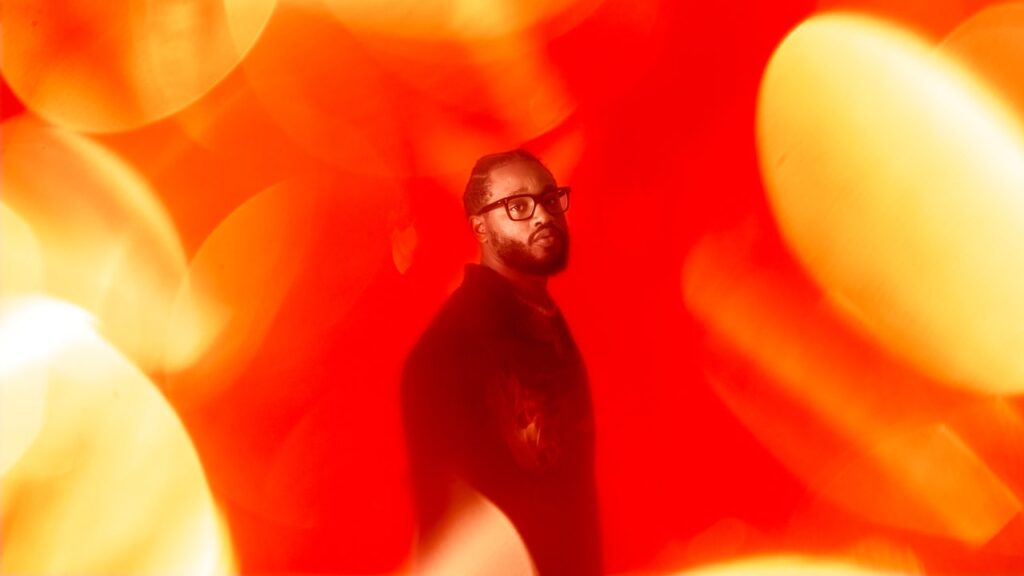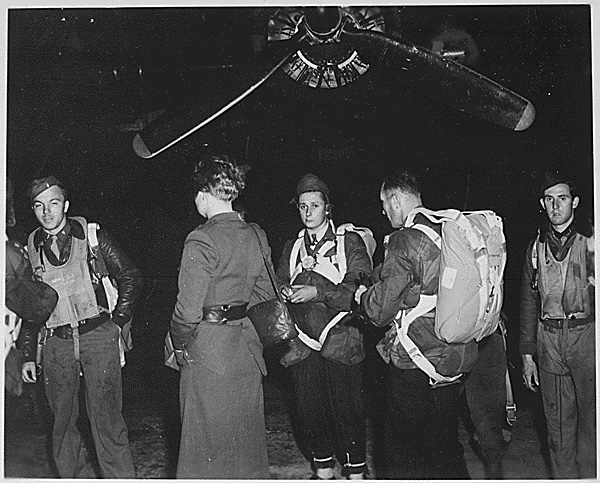To prepare for “Black Panther,” Coogler made his first trip to Africa, and spent several weeks travelling there. He told me, “I realized, All right, African Americans are extremely African. We may be more African than we know.” That discovery shaped the way he understood Mississippi’s complicated past for “Sinners.” “With this film it was, like, Oh, we affected this place,” he told me. “We brought Africa here.” Listening to Coogler, it began to make a kind of sense that, if a superhero movie could be a vehicle to understand the African diaspora, a vampire flick could address Jim Crow and the so-called Devil’s music.
Early in the shoot, Coogler visited the Mississippi Delta with the Swedish musician and composer Ludwig Göransson, who has worked on all five of his films, and Göransson’s father, Tomas, who is a music teacher. The circuitous route that the blues took to recognition as an American art form seemed profound to Coogler. He said, “I’m there with Ludwig and his father, a man in his seventies, who was inspired to become a blues guitarist because he went to a concert and saw either Howlin’ Wolf or Albert King. He heard Delta-blues music in Sweden, because these Black musicians couldn’t tour in the United States.” That exposure, Ludwig told me, proved transformative for his father: “He just connected with that music in a way that allowed him to express himself.” Coogler was struck by the fact that Tomas had taught his son to play blues guitar and that Ludwig had then come to the United States and was now working on a film about that music with a descendant of the people whose experiences are at the heart of it. This confluence, Coogler suggested, represents the closing of a particular historical and spiritual loop. “That’s how dynamic this music was,” he said. “I’m standing there with a seventy-year-old Swedish guitarist who’s in tears on a plantation. You know what I mean?”
Coogler spent the bulk of the day on the Warner Bros. lot combing through the film’s audio with a team of sound engineers. Hunched over a console table, he flagged a line from the actor Delroy Lindo, who plays a musician named Delta Slim, which was lost to the sound of a train rumbling into a station. Coogler told me that Zinzi, who co-produced the film, is usually present for this part of the process, but the weather had delayed her flight from Oakland. The two met as teen-agers and were married in 2016, and they have worked together in some fashion for as long as Coogler has been making films. He typically starts a new project by discussing it with her. “I’m talking to my wife, right?” he said. “It’s just, like, cool. ‘Will people like this? Will the hood feel this?’ I ask her that a lot. That’s code for the people we grew up with.” The key revelation, he told me, was that in crafting films for his home-town audience he’d found a way to appeal to audiences far beyond it.
“Sinners” comes at a crucial moment for Warner Bros., which has seen a number of box-office disappointments in the past year. Coogler represents Warner’s investment in young, bankable directors whose films the studio hopes will broaden its appeal. The commercial success of his previous films certainly factored into that expectation: “Fruitvale Station” had a production budget of less than a million dollars and grossed seventeen million at the box office. “Black Panther” brought in $1.3 billion globally, and domestically it was the highest-grossing film of 2018, as well as the highest-grossing film ever by a Black director. But the structure of the “Sinners” deal raised questions of how profitable the film will ultimately be for the studio. “Sinners” received overwhelmingly positive reviews and was the top box-office draw on its opening weekend. According to the Times, though, analysts estimate that expenses for the film could reach a hundred and fifty million dollars—and the deal allows for the rights to the film to revert to Coogler in twenty-five years. This arrangement has led industry insiders to hypertensively wonder if deals like this portend the end of the century-old Hollywood studio system. Coogler has countered the criticism by noting, “This is my fifth film, and I’ve never lost anybody money.”
“Sinners” had favorable harbingers. Spike Lee watched an early cut, with the Cooglers, and took to Instagram to proclaim, “I Just Had The Greatest Experience Of Watching A Film In Years.” When I spoke to him a few weeks later, his enthusiasm was undiminished. It was, he said, “like being at the Garden on a night when the Knicks are beating the Celtics”—a rare superlative in Lee’s evaluation of cinema. The praise was meaningful to Coogler, who includes Lee among his most enduring influences. (When Coogler was six, his father took him back to the Grand Lake, to see “Malcolm X.”) It was not lost on anyone, least of all on Lee, that, at a moment when theatres are awash in franchises and sequels, “Sinners” is something increasingly unusual—a big-budget studio movie with an original story line. Such a project represents a significant commitment to any director’s vision, but one that is especially rare for a Black director.
Given Coogler’s age, legacy is an unusually prominent concept for him. He told me that he’d assumed a level of fatalism early on, having witnessed lives lost to violence and to poor health care. Growing up in Oakland, “I did not see a whole lot of old Black men,” he said. That fact shaped his presumptions about what was possible. He took inspiration from Tupac Shakur, a virtual patron saint of the Bay Area, who was killed at the age of twenty-five, in 1996, but left behind a stunning volume of work. John Singleton died, of complications from a stroke, six years ago, when he was just fifty-one. Coogler’s voice still catches when he speaks of him. It was not until relatively recently, Coogler admitted, that he’d dared to imagine a career for himself that paired longevity with productivity. “You realize that Mick Jagger is still going to do a fucking show in Australia, you know what I’m saying? And dance across the stage,” he said. Martin Scorsese, he noted, almost incredulously, is still making films at eighty-two. For Black artists, that kind of tenure, both mortal and artistic, “is not presented as an option,” he told me. “But it should be.” He added, “Longevity has been something that is not associated with Blackness.”
Oakland is a central reference point for Coogler, much as Brooklyn has been for Spike Lee and South Central was for John Singleton. But whereas Lee and Singleton set a number of films in their home towns, Oakland appears as more of a sensibility than a place in Coogler’s work. When I met him there, in the summer of 2023, we visited his maternal grandmother, Charlene Thomas, at her home, on a quiet block in a gentrifying stretch of the city, where she raised her five children. Thomas is a kinetic, diminutive woman whose energy belies her years. She is close to her grandson—she even let him shoot some scenes for “Fruitvale Station” in her house. Coogler, like many people, learned to make bread during the pandemic, and that day he was taking Thomas a sourdough loaf.
Thomas’s home is a shrine to the family’s multigenerational history in the city. The opening scene of “Black Panther” takes place in a high-rise apartment complex in Oakland, which serves as both a shout-out to the city and a cinematic pun linking the comic-book character, who was introduced in the nineteen-sixties, and the radical Oakland-based political party of the same name. A municipal marker near Thomas’s house identifies the site of the Panthers’ first public action—serving as traffic guards at a dangerous corner. Three of Thomas’s children were among the Party’s early members; Ryan’s mother, Joselyn, the youngest, became a community organizer. Coogler credits his artistic world view to his family’s intertwined history of migration and activism. The utopia he constructed for the “Black Panther” films was, on some level, the product of the freedom dreams of groups such as the Panthers, and their imagining of what a better Black world might look like. Later, as we drove around Coogler’s neighborhood, a few miles east, the markers of the area’s history took on a more comedic edge. At an intersection, someone had posted stickers on the stop signs so that they read “stop Hammer Time”—a reference to “U Can’t Touch This,” by MC Hammer, another Oakland native.
Joselyn and Ira grew up together in the East Bay, and they both still live there. They started dating when they were students at Cal State Hayward. After Ryan was born they had two more sons—Noah, who is a now a musician, and Keenan, a screenwriter. Watching movies was a favorite pastime in the household, and it was Joselyn who programmed the family’s cinematic viewing. In 2022, Coogler was invited to deliver bafta’s annual David Lean Lecture, in London, and he described his mother as “one of those rare cinephiles whose taste doesn’t determine her attitude toward things. She’ll watch everything . . . from the works of Marty Scorsese to Lifetime movies.”
When Ryan was in his early teens, Ira began occasionally taking him along to San Francisco’s Juvenile Justice Center, where he worked—an experience that Coogler later drew on when writing “Fruitvale Station.” (Oscar Grant spent some time in prison.) In high school, Ryan and Zinzi were both athletic: she ran track and he played football, and they supported each other at their respective competitions. Coogler’s team, at St. Mary’s College High School—which was called the Panthers—had a rivalry with the Oakland Technical High School Bulldogs, and Coogler, a wide receiver, sometimes played against the future Seattle Seahawks running back Marshawn Lynch. Coogler performed well enough that he earned a football scholarship to St. Mary’s College, where he took a creative-writing course and developed an interest in the craft, then transferred to Sacramento State. He and Zinzi started dating when they were undergraduates—she attended Cal State Fresno—and he confided to her that he wanted to make movies. She gave him Final Draft screenwriting software—a pivotal vote of confidence. He was accepted to the film program at U.S.C. in 2008. Zinzi visited him often and sat in on some of his classes. “On one of his early student films, someone didn’t show up, and I had to hold the camera,” she told me.
At U.S.C., Coogler began to build the creative team he has worked with ever since. He met Sev Ohanian, an M.F.A. student from Los Angeles, early on, and after graduation Ohanian became a producer on “Fruitvale Station.” He also has production credits on, among other films, “Judas and the Black Messiah,” directed by Shaka King, and “Sinners.” He remembers Coogler as a singular figure on campus. “I knew then that Ryan was going to be a once-in-a-generation filmmaker,” Ohanian said. “I don’t think I was unique for thinking that.” He added that Coogler has maintained a collaborative ethic. “Sinners” is “a really challenging, ambitious film,” he told me. “Ryan would be, like, ‘Come look at the monitor. What do you guys think?’ He’s the auteur, of course. It’s his vision. He wrote this thing from beginning to end, on the page and on the screen, but he seeks that collaboration. And it’s not about him seeking validation. It’s only about ‘Is this connecting with you?’ ”
Premium IPTV Experience with line4k
Experience the ultimate entertainment with our premium IPTV service. Watch your favorite channels, movies, and sports events in stunning 4K quality. Enjoy seamless streaming with zero buffering and access to over 10,000+ channels worldwide.

















